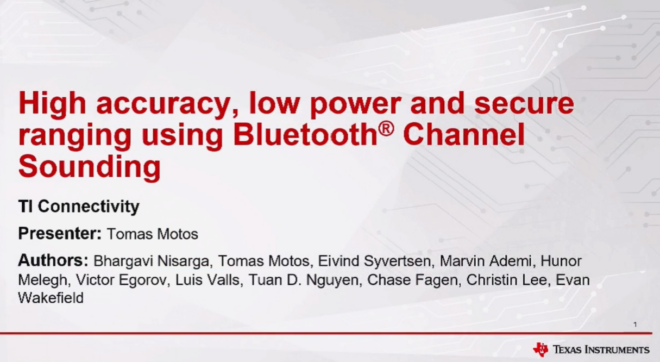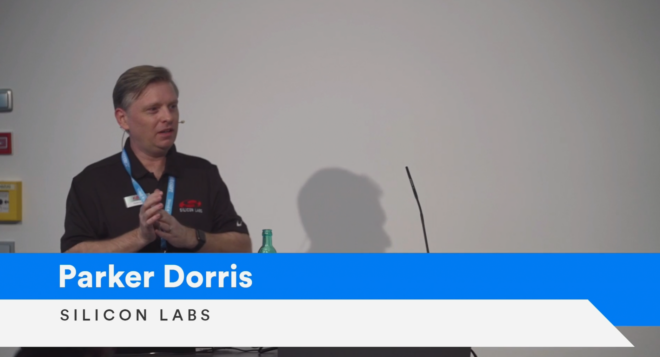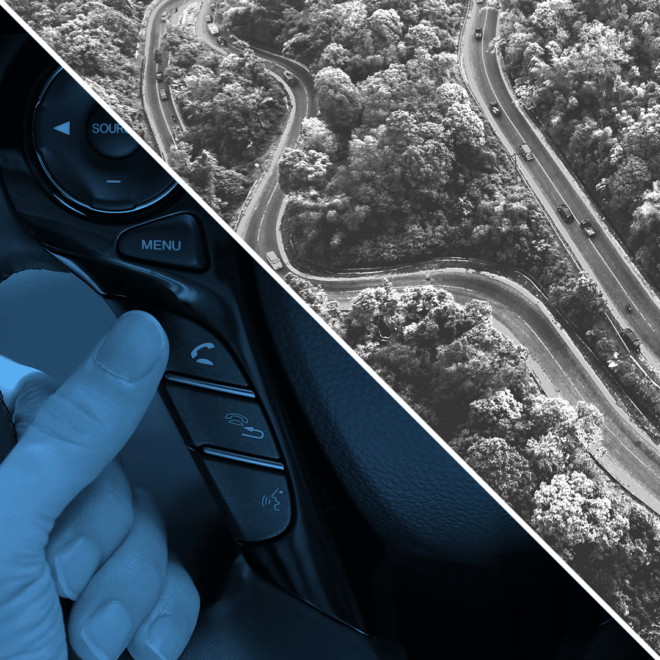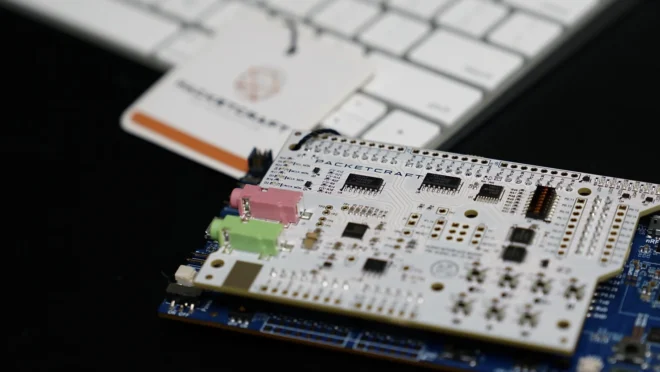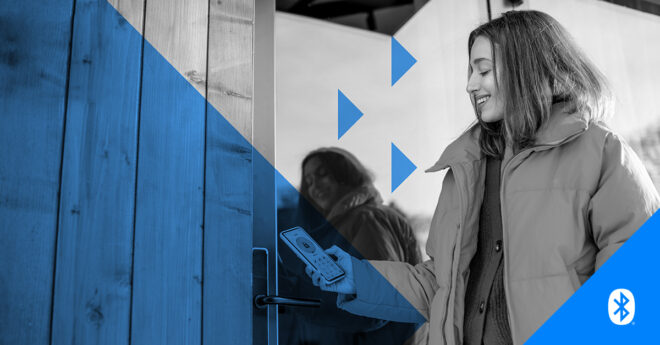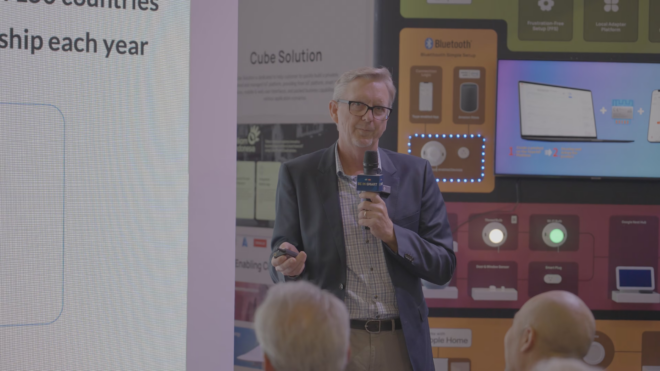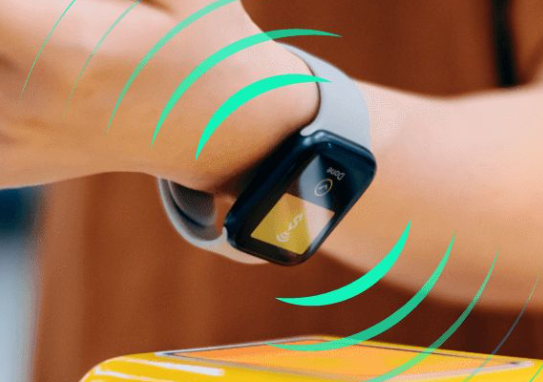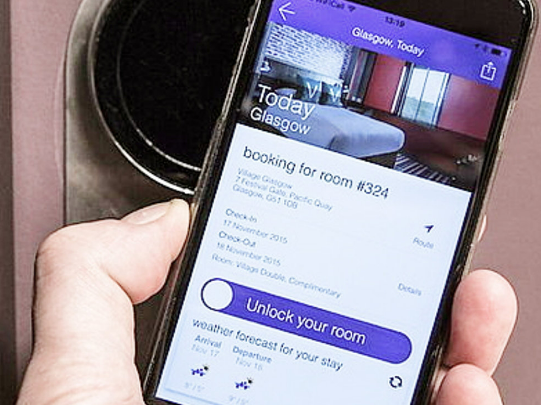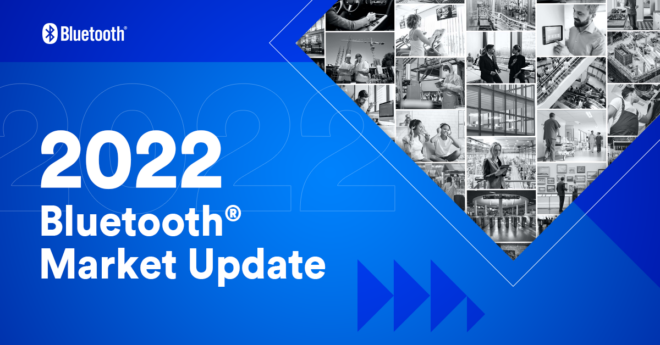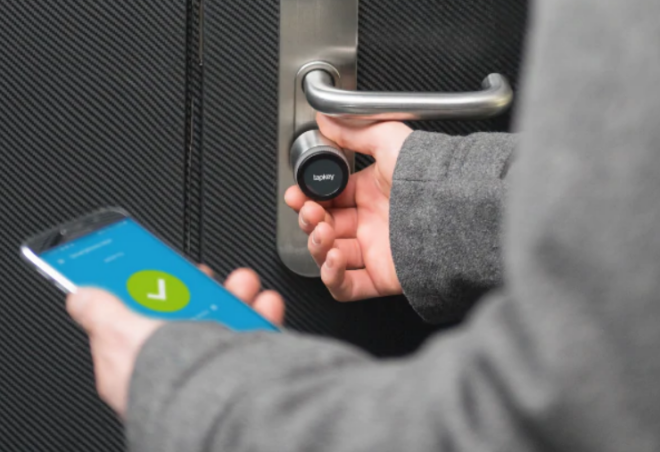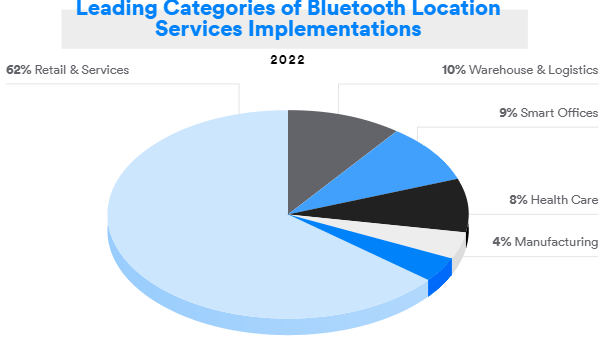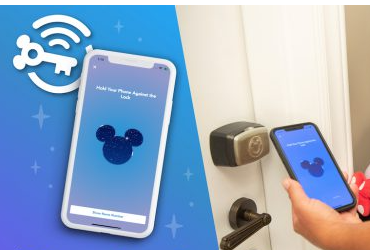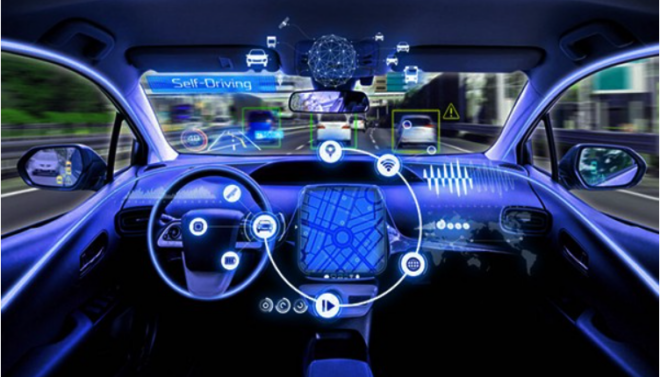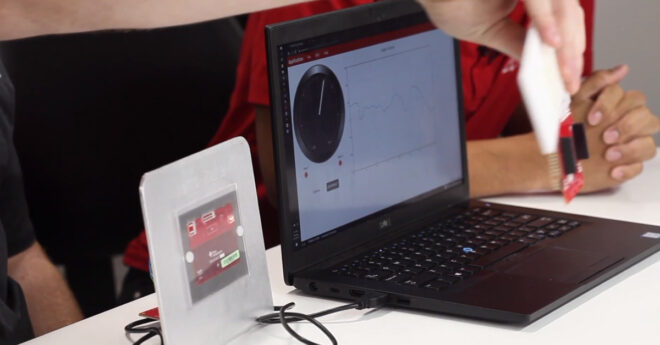V2X, or vehicle to everything, applies to wireless communication between a vehicle and a specific entity or network. V2X origins can be traced back to the 1970s, but, more recently, specific wireless standards for V2X communications have been defined. Most of the efforts with wireless vehicle communications have been driven by various advanced driver assistance system (ADAS) initiatives and have been focused on what we generically call in the wireless industry as wireless local area networks (WLAN) or wireless wide area networks (WWAN).
As electronics have proliferated and evolved in automobiles over the last decade, so have the needs for wireless communication both in and around the automobile. To use this initial definition of V2X is a bit myopic and quite constraining with the advent of other automotive wireless use cases that have emerged.
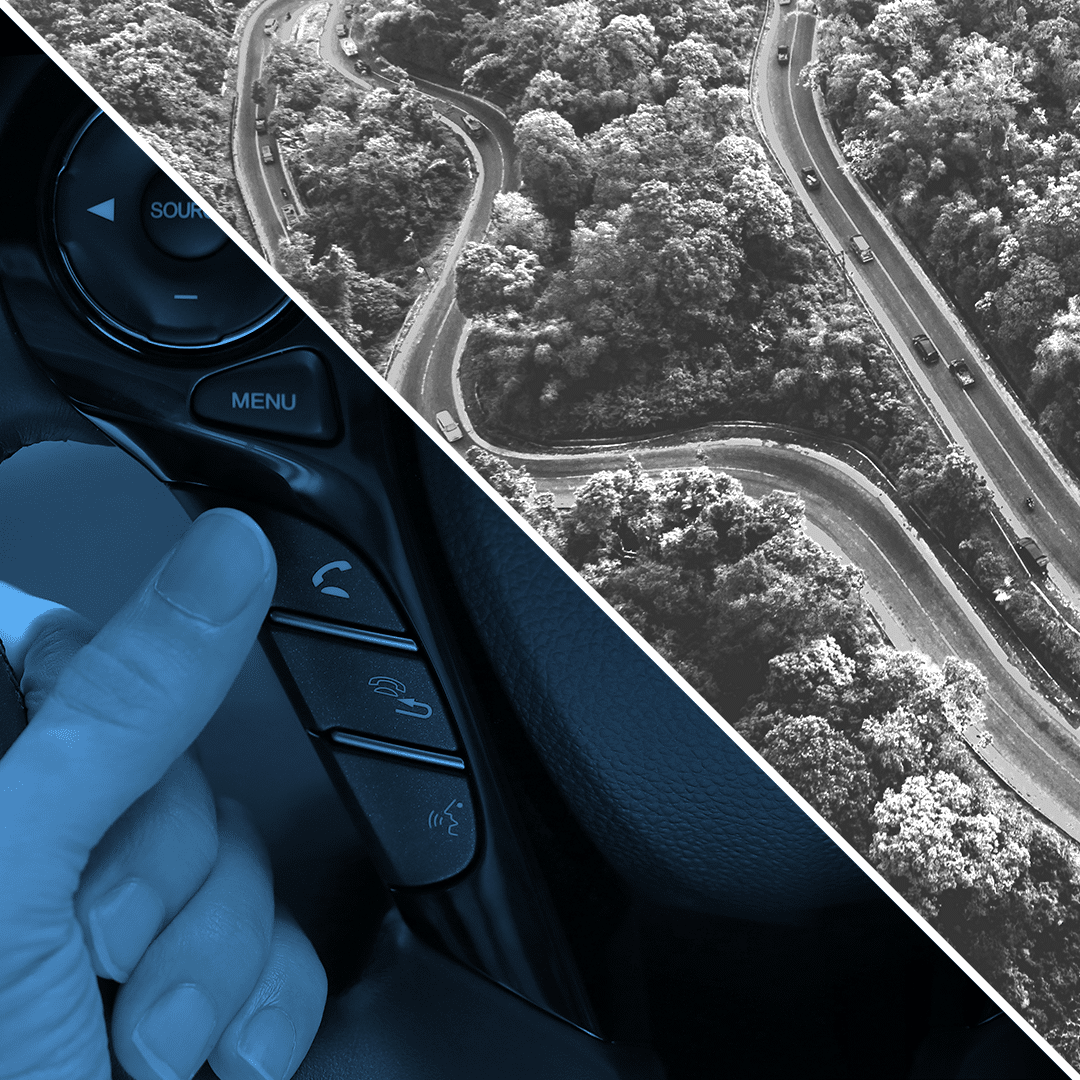
Bluetooth® Technology Enters V2X Applications
Bluetooth® technology is ubiquitous and found in most electronic devices we use today, most importantly our mobile phones. Bluetooth technology, or specifically Bluetooth Low Energy (LE), is categorized as a wireless personal area network (WPAN) technology with the key attributes of extremely low power and low cost. Bluetooth LE devices are typically battery powered and may have up to ten years of battery life.
When considering specific wireless use cases for vehicles, you must analyze the attributes of a given wireless protocol. Over the last couple of decades, I have been asked several times by the press and analysts, “Which is the superior wireless technology” or “Which wireless protocol will win.” My simple response has been a question back to them, “Which is the best method of transportation, a bicycle, a car, or an airplane.” They all do different things; their range, carrying capacity (payload), cost, and energy use are all quite different. The same is true when looking at wireless applications in automobiles.
Where We Have Been: Automotive Use of Bluetooth® Technology To Date
Bluetooth® technology is certainly not new to automobiles. We are all aware of applications such as hands-free phone use, synchronizing our phone contacts with the car, streaming music from our phone to the car’s infotainment system, and the use of Bluetooth technology in GPS navigation systems, including Apple CarPlay or Android Auto. Other, more limited uses have been in diagnostics via the use of aftermarket modules for the ODBii port as well as data tethering to cloud gateways via Bluetooth technology to cellular communications. Several automotive makers have migrated from proprietary wireless protocols to the use of Bluetooth technology in key fob applications.
While these are compelling uses of Bluetooth technology, they only scratch the surface of how Bluetooth technology is increasingly being used in vehicles.
Emerging Bluetooth® Technology V2X Applications
Let’s look at the basic classifications of automotive wireless communications. Figure 1 shows the classic six categories for V2X communications, plus a seventh category which is defined as in-vehicle communications. Some folks also call this in-cabin communications.
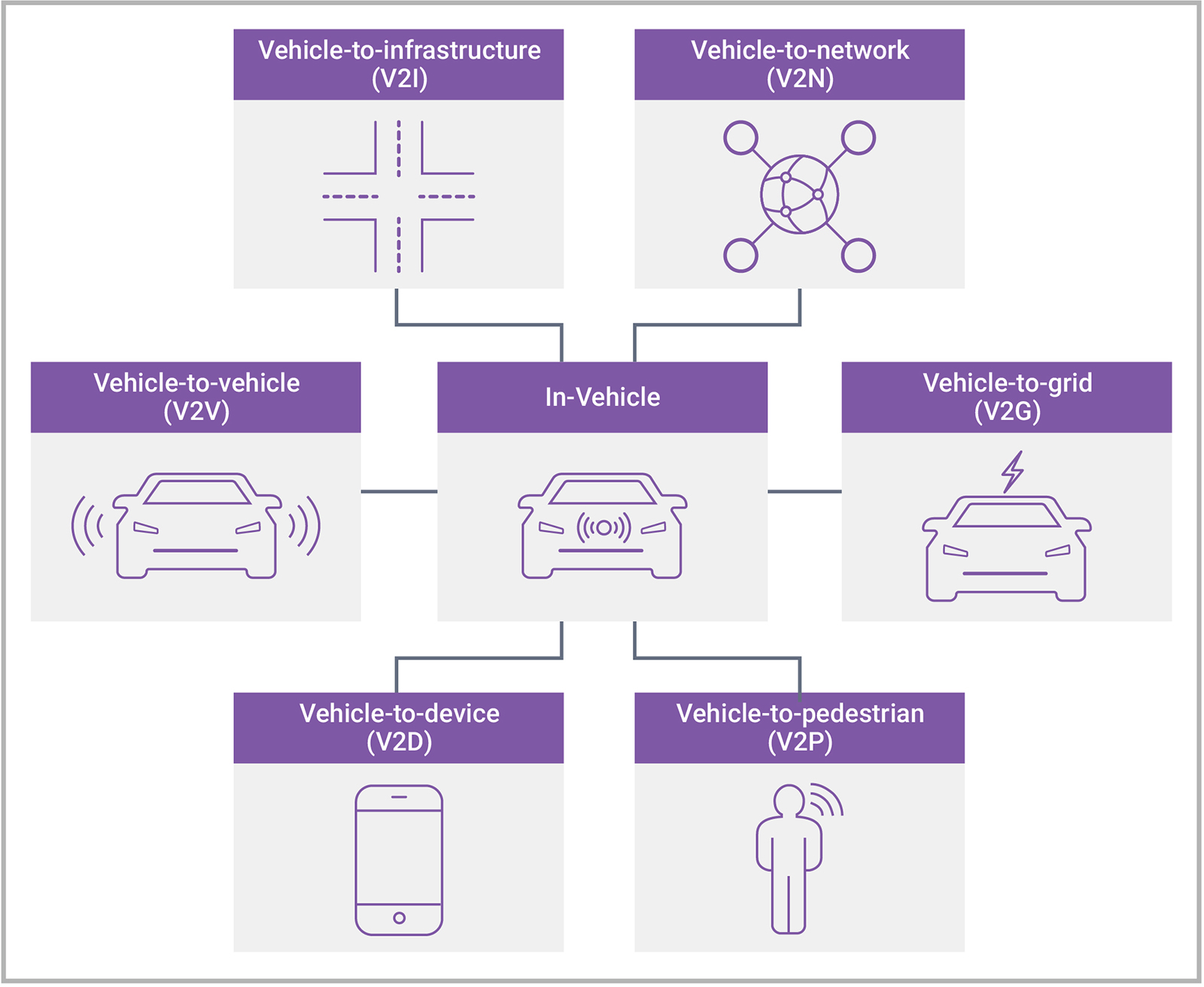
Figure 1: V2X Wireless Communication Classifications
Bluetooth® LE can be quickly eliminated as a useful technology in three of the seven V2X categories. Vehicle-to-network (V2N), which is basically communicating long range to the cloud, is better served by cellular technologies. Likewise, more medium-range applications (~1 kilometer) for vehicle-to-infrastructure (V2I) and vehicle-to-vehicle (V2V) applications are better serviced by other technologies.
This leaves the remaining four V2X categories that are viable for Bluetooth LE applications:
- In-Vehicle Communications (IVC)
- Vehicle-to-Device (V2D)
- Vehicle-to-Grid (V2G)
- Vehicle-to-Pedestrian (V2P)
In-Vehicle Communications (IVC) applications are well suited for Bluetooth LE due to the short range the wireless signal must travel. A simple example of this is cable/connector replacement for sensors or solenoids/actuators. This can help reduce the weight of heavy and expensive cable harnesses and eliminate some of the reliability issues associated with conventional connectors. Many of these wired systems are historically CAN bus-based, which can be supported over a simple dedicated Bluetooth wireless link. Network architectures in automobiles are evolving from 100s of individual electronic control units (ECUs) in a flat topology to more domain-specific ECUs and ultimately zonal networks connected to a central processing unit via ethernet. Despite this shift in network topologies, Bluetooth technology will play a role in connecting sensors to zonal gateways in different locations in the car.
Two of the more popular monitoring systems in vehicles that are migrating to Bluetooth LE are tire pressure monitor systems (TPMS) and battery management systems (BMS). TMPS have been historically low-frequency propriety wireless protocols. TMPS systems are becoming more sophisticated by not only measuring tire pressure but also temperature, vibration, and even thread wear to better indicate when maintenance or replacement is required to prevent tire failure. Standardizing Bluetooth LE technology, including using the new Periodic Advertising with Response (PAwR) feature recently released in version 5.4 of the Bluetooth Core Specification, will help increase reliability and extend battery life in TPMS systems.
BMS is a fairly new Bluetooth LE use case with growing significance. eVehicles have anywhere from 5000 – 9000 individual cells that are grouped together in several dozen modules within the overall EV battery pack. For effective cell management, modules must be monitored separately with their own charge controller to ensure proper cell operation for optimal capacity, life, and cell protection/safety. Current and voltage must be monitored to ensure the cells are operating in the safe operating area (SOA). Temperature and current charging rates are measured to determine the cell’s state of health (SOH). Because cells charge and discharge at different rates, the cell’s state of charge (SOC) must be monitored to ensure that charging currents are going to the cells that require charging the most while full cells are not being overcharged. This is called cell balancing and is depicted in the diagrams below. Running wires to all these individual charge controller/sensors can become quite onerous. BMS vendors are now designing Bluetooth LE-based controllers to handle communication wirelessly to simplify the wiring nightmare.

An additional consideration for Bluetooth LE is related to infotainment systems. We are all familiar with using Bluetooth technology to connect to the in-car infotainment system or wireless speakers. To date, these have been based on the Bluetooth Classic standard, also known as BR/EDR, which is a point-to-point connection to a single speaker or headset. With the advent of Bluetooth LE Audio, the audio quality has increased, the energy savings/battery life can increase by up to 90 percent, and, most importantly, the Bluetooth LE signal can be broadcast to multiple headsets in a vehicle. This is the Auracast™ broadcast audio capability, which is essentially a Bluetooth LE radio station that can be received by multiple headsets or earbuds, that has been recently promoted by the Bluetooth Special Interest Group (SIG).
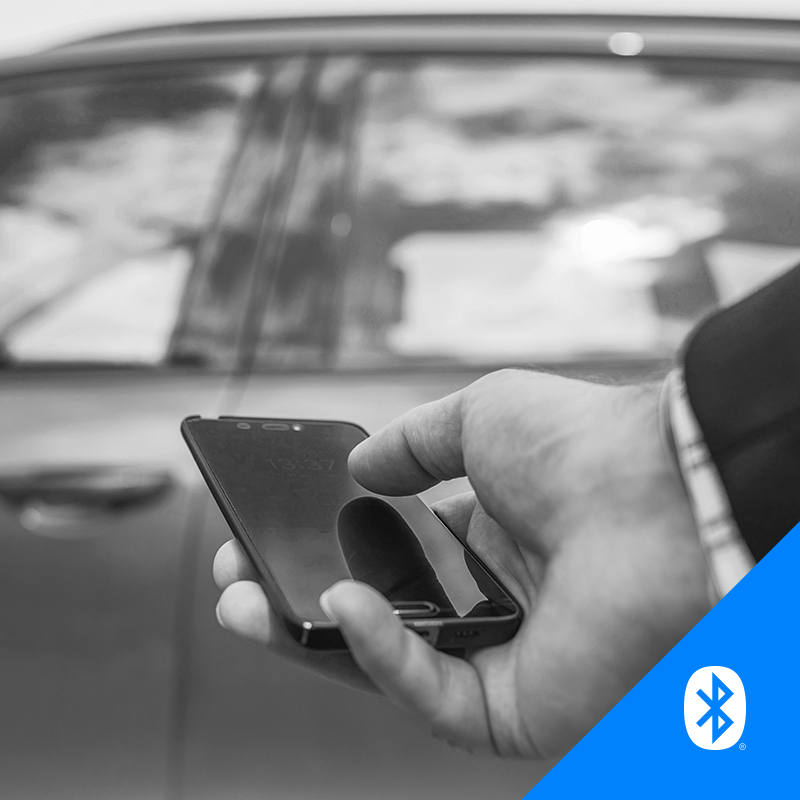
Vehicle to Device is the exchange of information between a vehicle and any electronic device that may be connected to the vehicle, most likely the owner’s mobile device. As mentioned previously, we use this today to stream audio in our car or communicate with the navigational system. Key fobs have now evolved to the use of your mobile device as a key (phone as a key or PaaK). On the near horizon is the distribution of digital keys to authorized users of your car. This could also apply to rental cars and trucking fleet management systems. Wireless digital key protocols, which include Bluetooth LE, have been defined by the Car Connectivity Consortium (CCC) in the Western world and other standards organizations in Asia. Bluetooth LE can be used by itself or in conjunction with near-field communications (NFC) or ultra-wideband (UWB) wireless protocols. Channel Sounding, an upcoming Bluetooth LE feature targeting adoption in the second half of 2024, will support secure fine ranging between two Bluetooth devices. This enables more precise distance measurement than simply measuring the radio signal strength. Accurately measuring the proximity of the user to their car enhances security measures associated with access and digital key distribution.
With Bluetooth LE in every smartphone, we are only an app away from providing other functionality over a Bluetooth LE wireless connection to various systems in a vehicle. This can include smartphone applications that show real-time diagnostics and performance information both for the driver and for auto shop mechanics. Other use cases include passenger comfort phone apps that allow driver customization with smart seats and other electronically controlled settings in a car, such as mirror positioning and radio station preferences. These settings would be changed as the driver approaches the car versus waiting until they have opened the door or are already seated in the car. Automakers are looking at the use of Bluetooth technology during the manufacturing process as well as downloading maintenance history and owner information during service calls.
Vehicle to Grid is a wireless application that is in its infancy. The demand for power to charge eVehicles could increase the load on power grids by significant proportions over the next decade. There have been documented cases where shipping companies have been denied approval to convert their trucking fleets over to battery power simply because the local power utility cannot provide enough power to charge their fleet overnight. The concept of V2G is that eVehicles can potentially be backup power storage devices to supply power back into electrical grids. Likewise, bidirectional charging stations could manage the push and pull of energy consumption from connected vehicles based on the energy demands at any given time. There have also been recent articles about charging coils being placed in the asphalt of roads to charge vehicles while driving or stopped at traffic lights. Regardless of the charging methodology, it is expected that Bluetooth LE will be used as a backchannel communication protocol to communicate between the vehicle and the charging system. A simpler V2G application which is already deployed is the use of Bluetooth LE to communicate with and pay for charging services in parking lots via your mobile device. Bluetooth LE can be the bridge between the car’s battery management system and the charging station next to the car to monitor the charging status and battery health, all while being observed on the owner’s mobile device.
Vehicle to Pedestrian is the last category for discussion. As our planet becomes more populated with both people and automobiles, it is easy to comprehend why injuries and deaths to pedestrians and bicyclists continue to rise yearly (excluding the pandemic). Safety organizations around the world, automobile makers, and several other agencies/companies are looking for solutions. The Ford Motor Company has been evaluating the use of Bluetooth LE to detect pedestrians via cell phone detection when in close proximity to cars. This is an extremely complicated issue to solve and may eventually involve several technologies, but I am sure that Bluetooth technology will be used in some manner to provide at least a portion of the ultimate solution.
Conclusion
The definition of V2X is evolving to include short-range wireless applications both in and around a vehicle. Bluetooth® technology, and specifically Bluetooth LE, is present in our mobile phone, which makes it the de-facto standard for short-range wireless communications. The use of Bluetooth LE in various use cases discussed in this article highlights just some of the Bluetooth applications that are expected to be deployed in automobiles over the next couple of years. Only the future will tell us what’s in store for us beyond that.
![]()
NEW MARKET RESEARCH
The Ambient IoT – The Emergence of a New Class of Bluetooth® IoT Devices
This report defines the Ambient IoT, outlines targeted use cases, and highlights the next steps needed to capitalize on the Ambient IoT opportunity. It also explains the central role of Bluetooth® technology in addressing Ambient IoT use cases, characterized by its low power consumption, low cost, flexibility, interoperability, and scalability.
V2Xは「Vehicle to everything(自動車とあらゆるモノ)」の略で、自動車と特定のモノ、または自動車とネットワーク間の無線通信を指します。V2Xの起源は1970年代にさかのぼることができますが、最近でもV2X通信用の無線規格が策定されています。自動車に関連する無線通信技術の開発はほとんどの場合、各種ADAS(先進運転支援システム)技術の開発に呼応して、無線業界で一般的にWLAN(無線LAN)やWWAN(無線WAN)と呼ばれるネットワークを中心に進められてきました。
過去10年にわたる車載エレクトロニクスの拡大と進化に伴い、車両内外での無線通信の必要も拡大し、より高度なものが求められるようになってきました。自動車で無線通信がさまざまな用途に使われるようになった現在では、 V2Xを元来の意味で使い続けるのは少々視野が狭く、窮屈でもあります。

V2Xに導入されるBluetooth®︎技術
Bluetooth®︎技術は一般に広く利用され、今日ではスマートフォンをはじめとするほぼすべての電子機器に搭載されています。Bluetooth技術、具体的にはBluetooth®︎ LEは、WPAN(無線パーソナルエリアネットワーク)技術の一種に分類され、極めて低い消費電力と低コストを主な特徴としています。Bluetooth LEデバイスは一般的に電池を電源とし、電池寿命は10年に及ぶ場合もあります。
自動車の無線通信のユースケースを考える際には、所与の無線プロトコルの特徴を詳しく分析する必要があります。この数十年、プレス関係者やアナリストたちに「より優れているのはどちらの無線技術か」「勝つのはどの無線プロトコルか」と何度も尋ねられました。私の答えはいつも単純で、「自転車、自動車、飛行機のどれが移動手段として最も優れているでしょうか?」と質問で返していました。これらの移動手段はそれぞれ目的が異なり、移動距離、運搬能力(積載量)、コスト、エネルギー使用量のすべてにおいて大きく異なります。自動車で無線通信を使う場合も、これと全く同じことが言えます。
これまでの自動車におけるBluetooth®︎技術の用途
自動車でのBluetooth®︎技術の使用自体は、決して目新しいことではありません。Apple CarPlayやAndroid Autoを含めた、ハンズフリー通話、自動車との連絡帳の同期、スマホから車載インフォテインメントシステムへの音楽ストリーミング、GPSナビシステムでのBluetooth技術の使用などはよく知られています。ほかにも、より限定的な用途として、OBD2ポートにつないだアフターマーケット機器による故障診断や、Bluetooth技術を介したセルラー通信でのクラウドゲートウェイへのテザリング接続などもあります。一部の自動車メーカーでは、キーフォブ(リモコンキー)の独自の無線プロトコルをBluetooth技術に切り替えています。
どれもBluetooth技術を見事に活用していますが、乗り物においてますます広がるBluetooth技術活用のほんの一部にすぎません。
Bluetooth®︎技術を活用した新しいV2Xアプリケーション
ここで、自動車の無線通信の基本的な種類を見てみましょう。図1は、車内通信(一部では車室内通信とも)に位置付けられる典型的なV2X通信6種類に加え、7つ目の種類を示しています。
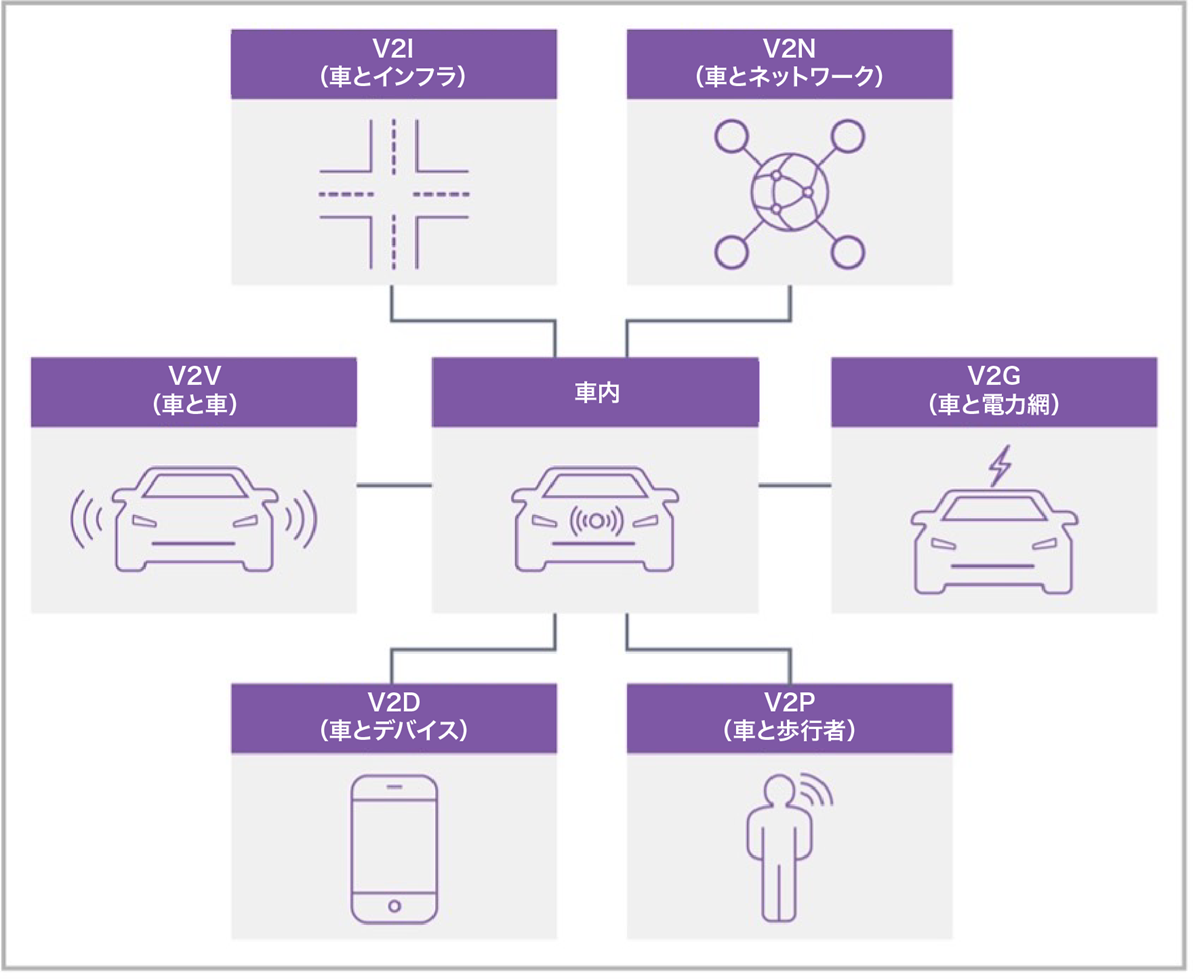
7種類のV2Xのうち3種類についてはすぐに、Bluetooth®︎ LEを利用可能な選択肢から外せます。基本的にクラウドへの長距離通信であるV2N (Vehicle-to-Network、車とネットワーク)にはセルラー技術のほうが適しています。 同様に、中距離通信(最大約1km)のV2I (Vehicle-to-Infrastructure、車とインフラストラクチャ)やV2V (Vehicle-to-Vehicle、車と車)の場合も、他の技術のほうが適しているでしょう。
その結果、Bluetooth LEを活用できるのは残る4種類です。
- IVC (In-Vehicle Communications、車内通信)
- V2D (Vehicle-to-Device、車とデバイス)
- V2G (Vehicle-to-Grid、車と電力網)
- V2P (Vehicle-to-Pedestrian、車と歩行者)
IVC (In-Vehicle Communications、車内通信)は必要な無線信号の通信距離が短いため、Bluetooth LEが適しています。わかりやすい例としては、ソレノイド/アクチュエータやセンサー向けの、ケーブル/コネクタによる有線通信の置き換えがあります。ワイヤーハーネスの重量および高額なコストの削減が図れるほか、従来のコネクタに関連する信頼性の問題もなくなります。従来これらの有線システムの多くはCANバスに基づいたもので、専用のシンプルなBluetooth無線接続で置き換えることができます。自動車のネットワークアーキテクチャは、数百個のECUのフラットなトポロジーから、ECUがドメインにまとめられ、最終的にはゾーンを構成してイーサネット経由で中央処理装置につながる形へと進化しています。ネットワークトポロジーがこのように進化しても、車内のさまざまな場所でセンサーをゾーンのゲートウェイ につなぐためにBluetooth技術を使用できます。
自動車でよく見られる監視システムでBluetooth LEへの移行が進んでいるものに、TPMS (タイヤ空気圧監視システム)とBMS (バッテリーマネジメントシステム)の2つがあります。従来、TPMSでは低い周波数帯の独自の無線プロトコルが使用されていました。今日のTPMSはますます高度になっており、タイヤ故障防止のための保守・交換タイミングをより適切に示せるように、タイヤの空気圧だけでなく温度、振動、さらには溝の摩耗状態までも計測します。Bluetooth LE技術による標準化は、Bluetoothコア仕様5.4で先日公開されたPAwR(レスポンス付き定期アドバタイズ)機能の使用を含め、TPMSシステムの信頼性向上とバッテリーの長寿命化に役立つでしょう。
BMSはBluetooth LEの比較的新しい用途ですが、その重要性は高まりつつあります。EVには約5000から9000のセルがあり、それが数十のモジュールにまとめられてEVのバッテリーパック内に収められています。セルを効果的に管理するためには、モジュールをそれぞれの充電コントローラで個別に監視し、セルの最適稼働を図ることで最高の容量、寿命、セルの保護・安全を保証する必要があります。セルの安全動作領域(SOA)内での動作を保証するには、電流と電圧の監視が必要です。セルの健全度(SOH)の判定には、温度と充電率の測定が行われます。セルによって充電率と放電率は異なるため、各セルの充電状態(SOC)を監視することで、充電が最も必要なセルを充電しながら、満充電状態のセルの過充電を防ぎます。これは「セルバランシング」と呼ばれるもので、次の図に示されています。個々の充電コントローラ/センサーすべてに対する配線はかなり厄介になりかねません。このため、現在では配線のわずらわしさを簡素化して無線通信を操作できる、Bluetooth LEベースのコントローラが設計されています。
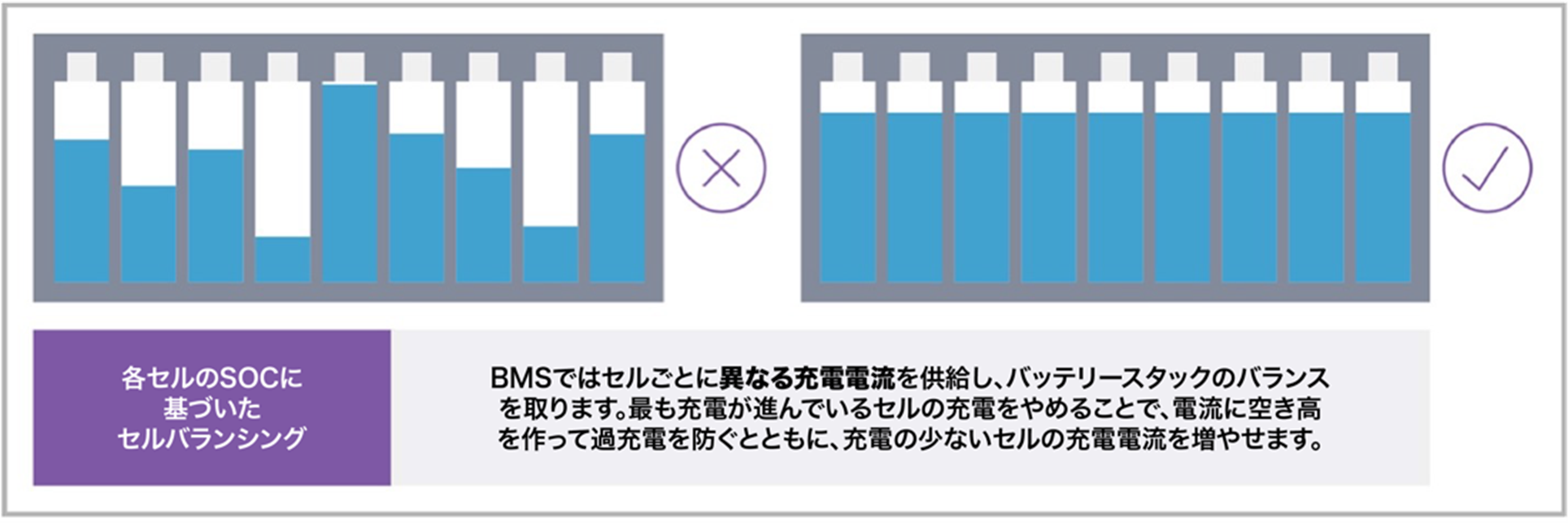
Bluetooth LEは、インフォテインメントシステムにも関連します。車載インフォテインメントシステムやワイヤレススピーカーへの接続にBluetooth技術が使用されることはよく知られていました。これまではBR/EDRとしても知られるBluetooth Classicの規格に基づいていましたが、ポイントツーポイントの接続となるため、接続できるのは単一のスピーカーまたは単一のヘッドセットに限られます。Bluetooth LE Audioの登場で、優れた音質と最大90%のエネルギー節約/バッテリー寿命の向上が実現しましたが、何より重要なのはBluetooth LEが車内の複数のヘッドセットにブロードキャスト配信できる点です。これはBluetooth SIG (Special Interest Group)が最近推進している、Auracast™ ブロードキャスト・オーディオの機能で、本質的にはいわばBluetooth LEのラジオ局を実現し、その放送は複数のヘッドセットやイヤホンでの受信が可能です。

V2D (Vehicle-to-Device、車とデバイス)は車と、車に接続された電子機器、多くは車の所有者のモバイルデバイス類との通信を指します。先述したように、車内でのオーディオのストリーミング再生や、ナビシステムの操作などに使用されています。キーフォブ(デジタルキー)も進化し、スマートフォンを車のキーとしても使用できるようになりました (Phone-as-a-Key、PaaK)。近い将来、車の運転を許されたユーザーにデジタルキーを配布することもできるようになります。この技術は、レンタカーやトラックのフリートマネジメントシステムでも活用できるでしょう。Bluetooth LEを含むデジタルキー用無線プロトコルは、西洋諸国ではCCC (Car Connectivity Consortium)、アジアでは他の標準化団体で規定されています。Bluetooth LEは単体でも、NFC (近距離無線通信)またはUWB (超広帯域無線)といった無線プロトコルと併用して利用できます。「チャネルサウンディング」は2024年後半の採用が目指されているBluetooth LEの新機能ですが、2つのBluetoothデバイス間の距離を、セキュリティを確保しつつ高精度で推定できます。単に無線信号の強度を測るのに対し、より精度の高い距離測定が可能です。ユーザーと車との距離を正確に測定できることにより、車のアクセスやデジタルキーの配布に関連したセキュリティ対策も強化できます。
あらゆるスマートフォンにBluetooth LEが搭載されているため、アプリを一つ追加するだけで、車内の各種システムとのBluetooth LE接続を利用した新しい機能の提供が実現します。たとえば、ドライバーや整備士の両方に向け、リアルタイム故障診断機能や車両性能情報を示すスマートフォンアプリなどが考えられます。ほかにも、スマートシートやミラーの位置、ラジオ局の選択など設定可能な車内機能をドライバーに合わせてカスタマイズできる、快適性向上のためのスマートフォンアプリも考えられます。このアプリでは、ドライバーが車に近づいただけで、車の各種設定がその人に合わせて変更されます。ドアを開けたり、運転席に座ったりする必要はありません。自動車メーカーでは、生産工程や、出張サービス時の保守履歴・所有者情報のダウンロードにも、Bluetooth技術の使用が検討されています。
V2G (Vehicle-to-Grid、車と電力網)は無線用途としてまだ初期段階にあります。今後10年のうちに、EV充電需要によって電力網の負荷がかなり増えることが考えられます。実際、ある電力会社では夜間充電に十分対応できないために、輸送会社の保有トラックのEV化の申請が却下された例もあります。V2Gのコンセプトは、電力網に電力を供給するバックアップ蓄電池としてEVを使用するというものです。双方向の充電ステーションでは、その時点のエネルギー需要に応じて接続された車両との電力のやりとりを管理できます。アスファルトの路面の下に充電コイルを埋設し、走行中や赤信号停車時に充電を行うという取り組みも最近報道されました。どのような充電方法であっても、Bluetooth LEは車両と充電システムが裏で通信するためのプロトコルとして使用されると予想されます。既に実用化されているシンプルなV2Gアプリケーションもあり、Bluetooth LEを使用してスマートフォンから駐車場などにある充電サービスの利用と支払いを行います。Bluetooth LEが車のBMSと充電ステーションとの橋渡し役となって充電状況とバッテリーの健全度を監視し、その情報を車の所有者のスマートフォンで常時閲覧することもできます。
V2P (Vehicle-to-Pedestrian、車と歩行者)は今回取り上げる最後のカテゴリーです。地球上の人と車の増加に伴い、歩行者や自転車に乗った人の負傷・死亡事故が年々増加する理由は理解に難くありません(新型コロナウイルスによるパンデミック期間を除きます)。世界中の安全機構、自動車メーカー、その他の政府機関や企業が解決策を求めています。フォード・モーター社は、携帯電話を検出することで歩行者と車の接近を検知するためにBluetooth LEを使用する検討を進めています。これは非常に複雑な問題で、最終的には複数の技術の併用を要するかもしれませんが、何らかの形でBluetooth技術が使用され、最終的な解決策の少なくとも一部になることは疑いありません。
結論
V2Xの定義は進化を続け、今では車両内、車両周辺の両方における短距離無線が含まれます。Bluetooth®技術、具体的にはBluetooth LEは、スマートフォンに搭載され短距離無線通信のデファクトスタンダードとなっています。本記事で取り上げたBluetooth LEのさまざまな用途は、今後数年に自動車への実装が予想される用途の一部にすぎません。その先に何が待ち受けているのか、来るべき未来に明らかになるでしょう。

